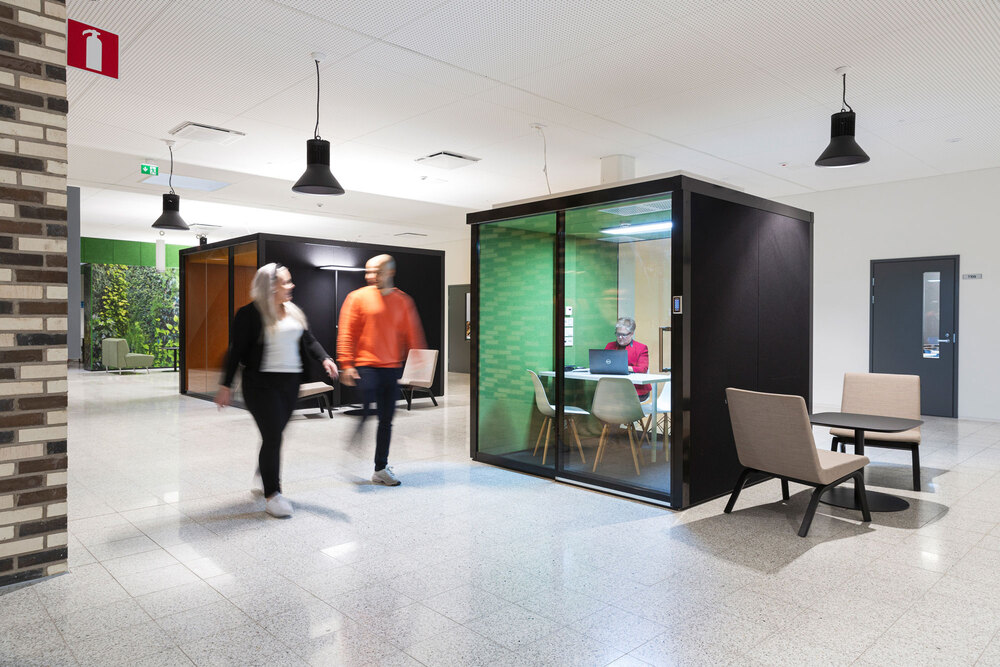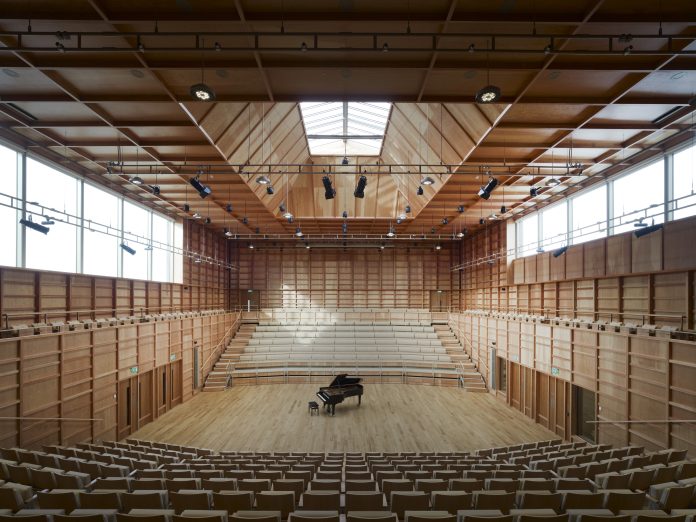Discover how Quiet Mark certified-solutions, for every application area and building type, can improve health and wellbeing through reduced noise and acoustic comfort.
Quiet Mark’s Acoustic Academy is a free-to-use online directory of expertly verified acoustic solutions, to make it easier for consumers and trade buyers to source the quietest products available on the market.

“Sound is invisible it’s too often overlooked,” says Poppy Szkiler, CEO and Co-Founder of Quiet Mark. “And yet the fundamental impact it has on all the physical rhythms of our bodies, our hormones, heart-rate and brain waves, is so profound and inherent to our wellbeing, we cannot afford to ignore it in the design process of the buildings we live in.”

Available via quietmark.com, visitors to Acoustics Academy are first invited to select their project’s, building type, then browse products for every application area, such as Exterior Sound Control, Sound Build Up and Reverberation Control, Sound Masking and Impact/ Footfall Sound Control.

To optimize acoustic comfort within any space one needs to take a dual approach, reducing the volume of noise emitting products and appliances, (such as air purifiers, hand dryers and extractor fans), whilst introducing acoustic improving building materials, (such as acoustic plaster systems on ceilings, sound absorbing lighting and furniture, LVT flooring, and noise reducing glazing and doors).

Quiet Mark, associated with the UK Noise Abatement Society charitable foundation’s, core mission is to createpeaceful living to support public health. Through partnerships with leading retailers including Argos, John Lewis and Currys, and the leading construction specification platform, NBS, they are simplifying quiet appliance buying and acoustic product sourcing for everyone, everywhere.

In this article, we highlight a selection of Quiet Mark certified products that can be found on their Acoustics Academy platform, by industry leading brands such as BASWA acoustic, BlockO, BuzziSpace, Daikin, GROHE, Internorm, Rockfon, ROCKWOOL, Miele and Samsung. There’s also innovative new technology by Moodsonic, a company working with architects and designers to transform workspaces, schools, healthcare and more using intelligent biophilic soundscapes.

World Health Organisation research shows that environmental noise pollution affects mental and physical health and is now second only to air pollution as the world’s largest killer pollutant. Improved acoustics can improve our health and significantly increase our sense of well being.

Research from the British Journal of Psychology found that background noise kills productivity levels, with studies showing that workers can be up to 66% less productive when exposed to just one nearby conversation.

Getting sufficient undisturbed sleep is critical for feeling good and performing well. According to the Sleep Foundation, exposure to too much noise during sleep has immediate effects while we are sleeping, which leads to short-term issues the next day, and over time may result in long-term mental and physical consequences.

The Leesman Index has measured the employee experience of almost 1M employees, at 6.2K companies, in 107 countries, at the office and at home, to build global benchmarks of the best work environments in the world.

According to Leesman Index, the biggest difference between new workplaces that succeed in providing the users an outstanding experience, and those that fail, is in support for activities that we know are generally well supported at home, e.g. thinking, having private or business confidential conversations. In other words, activities that rely on good acoustic privacy. Leesman found that noise levels are important to 71% of the employees, yet only 33% find them satisfactory in their workplace.

In November 2021, The Predictive Index surveyed 326 executives about The Great Resignation. The survey attempted to put a dollar amount on this mass work reshuffling. It found that the average cost of a single resignation is $11,372, (approx. £9.6K) per employee. Though this may not seem like a lot, consider that the survey also found that 20% of employees have quit in the past six months. At a 500-person organization, if 100 people leave, this could cost a company nearly $1 million. Wouldn’t a portion of that finance be better invested in improving acoustics to create a space within which teams can work productively, grow and thrive?

The Acoustics Academy is free to use and available via quietmark.com and acousticsacademy.com




